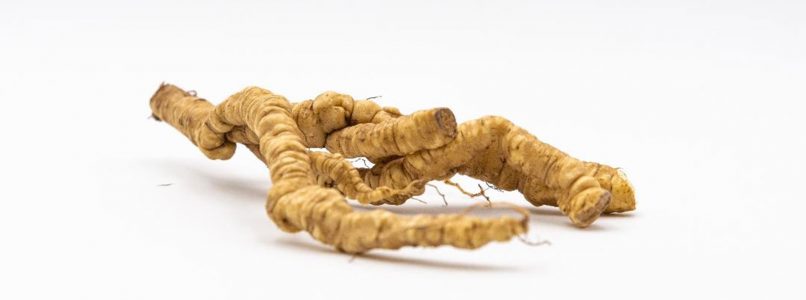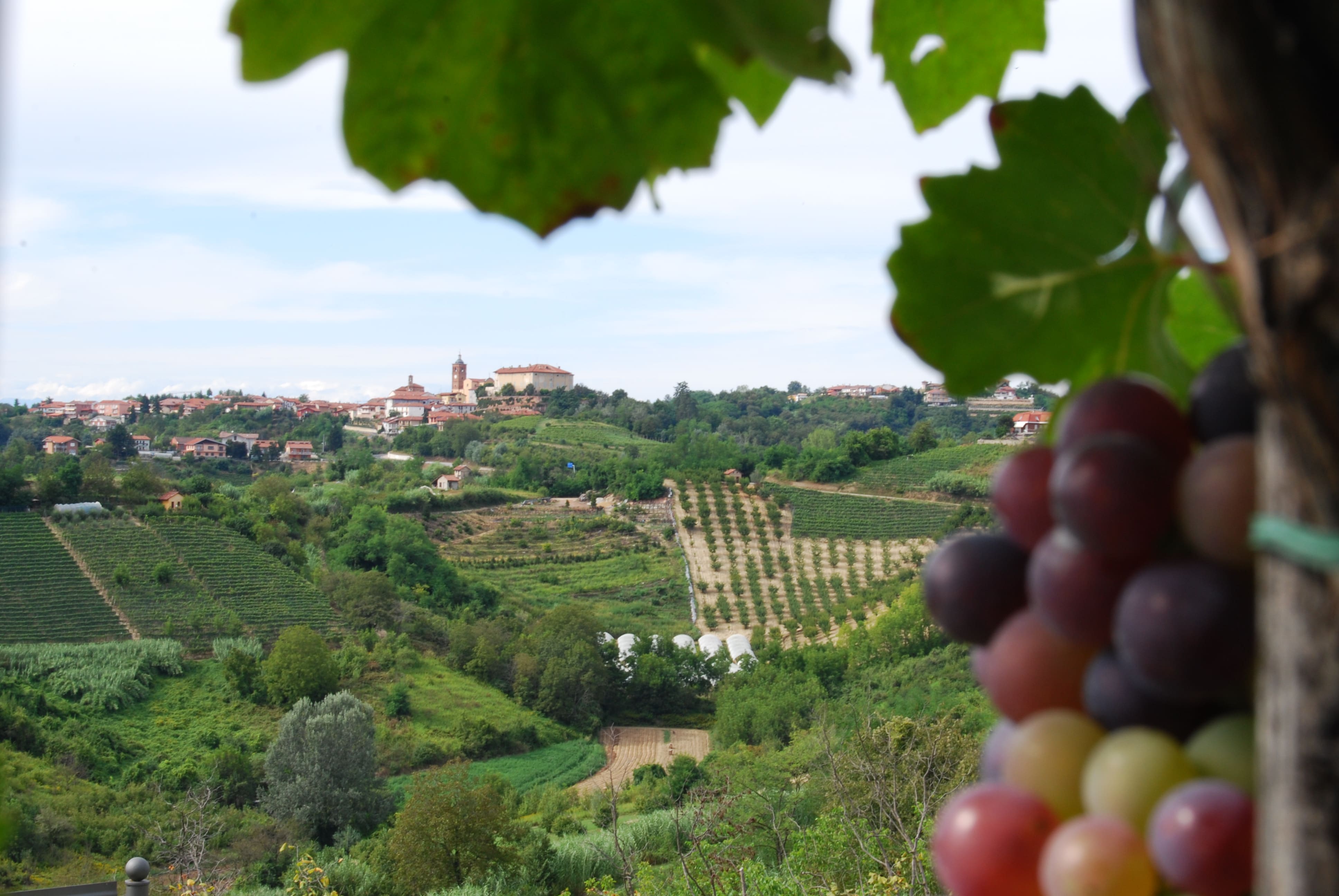On December 8th in Govone an unmissable event, an ancient vegetable protagonist rediscovered by Enrico Costanza, culinary gardener of Piazza Duomo, and his team
On December 8th, during the Magic Christmas Country of Govone, at the Food Festival, an important discovery will be presented for the territory: Sisaro, the white carrot from Roero.
Enrico Costanza, culinary gardener of Enrico Crippa, has rediscovered this ancient carrot variety, with a curious shape. The chef, three Michelin stars in Piazza Duomo Alba, will present Sisaro, the Roero carrot during an event open to the public (subject to availability) Sunday 8 December, at 3.30 pm, at La Serra del Castello di Govone.
It will be presented during Govone's Magic Christmas Country (the only Italian candidate for the Best Destinations Awards 2020, Christmas markets category), as part of the first Food Festival of the Roero (30 November – 1 December and 7-8 December), in which the best products of the territory will be told, with the precious collaboration of chef Davide Palluda (one Michelin star at the Enoteca di Canale) and, of course, Enrico Crippa.
We had a chat with chef Enrico Crippa and his culinary gardener Enrico Costanza to find out more about this ancient vegetable and we had the recipe that the chef created with Sisaro told.
Enrico Crippa, chef Piazza Duomo Alba
What does it mean for a chef to be able to create a dish with an ingredient like Sisaro?
I can say that for me, for us, it is a great feeling to be able to work with an ingredient, a vegetable, which was part of this territory. It was exciting to find this ancient ingredient, full of strengths and weaknesses, with all its characteristics: it has a very interesting taste on the palate, but on the other hand a difficulty of cultivation and a simple kitchen management, due to its shape . It is a niche ingredient, we have very little in the garden, because it is really an experiment, we can make very few dishes for the restaurant. For us, Sisaro is a great protagonist and he will also be one during the December 8th presentation event in Govone.
How important is the creation of the Piazza Duomo menus (in a creative sense) to have a vegetable garden like yours, managed by your culinary gardener Enrico Costanza?
Over the years the garden has become increasingly important and its presence on the menu has increased in weight to become the heart of the menu itself. If before the reasoning on the creation of the dishes was based, with each change of paper, on what we could accompany with a particular cut of meat or fish, now we do the reverse thought: what can we combine with a juicy and sweet onion, a crunchy cabbage or al Sisaro? Which protein can accompany that vegetable, that tuber, that vegetable?
The collaboration with Enrico Costanza and the whole team working in the garden has provided an increasingly good raw material, excellent products, year after year. We organize a meeting at the end of the season, where we all meet: if during the year we have discovered vegetables, vegetables, aromatic herbs that interest us and that are not present, we try to include them. For changes and implementation it takes at least two years and a thorough study of the ingredients. The vegetable garden to have a logical production (also understood as quantity for our needs) must be planned very well, from the spaces to the sowing times and the harvesting times. Without forgetting that we are at the mercy of the seasons and atmospheric events and the programming, even the most precise, often has to be revised because of the climate.
The processing of garden products for the Piazza Duomo kitchen starts already in the field, even before arriving here: to avoid downtime and double work, the preparation of vegetables and vegetables is done by Enrico Costanza and his team. Everything that arrives in the kitchen at Piazza Duomo is almost ready to be cooked. The seasons inspire the dishes and the menu: sometimes it happens to have very good products, but no longer in season. It is a continuous discovery.
Enrico Crippa's recipe for Sisaro
First of all we must clean and clean Sisaro well, then cut into small pieces. In the pot we prepare a base of hazelnut oil and chopped fresh winter onion, when it is well stewed, we add the Sisaro previously cut into small pieces. We cover with water and cook. When cooked, we prepare a cream, in practice it is the same procedure as the carrot cream. Unlike the carrot cream, Sisaro is assembled with hazelnut oil. We finish the preparation with the dish, with chopped hazelnuts, brown sugar, black pepper, juniper and salt. A very simple recipe, which enhances the characteristics of Sisaro, its sweetness and aromaticity.
Enrico Costanza, culinary gardener Piazza Duomo
Sisaro
In the wake of the great revival of the forgotten ancient vegetables, it would be worthwhile to rediscover the Sisaro (Sium sisarum), a plant that produces a collated root of a pleasantly sugary flavor already known in the Germanic area during the pre-Roman era and, subsequently, also cultivated in our peninsula. Although it cannot be verified that the "siser" mentioned by Pliny the Elder, or the favorite vegetable of the emperor Tiberius, is actually the plant in question, it remains certain that Sisaro was widely present in herbal texts and cookbooks from the Middle Ages and the Renaissance. In the kitchen the Sisaro was used until the end of the XVIII century and it experienced the decline with the introduction of the horticultural carrot. An interesting profile of Sisaro is traced by the Piedmontese botanist Oreste Mattirolo in his Piedmontese phytoalimurgia, which identifies the historic presence of this root in the area between Alba and Barbaresco.
How was (re) discovering this new but ancient vegetable?
In reality we have not discovered anything, but we have recovered Sisaro. My colleagues and I do a lot of research (the team that works in the garden is made up of 5 people coordinated by Enrico Costanza, ed), we travel, we read, we study a lot, we compare ourselves with many gardeners like us. Some time ago I found Oreste Mattirolo's book in my hands, Piedmontese phytoalimurgia, published in first edition in 1932. The manual was intended to help people recognize botanical species, even wild ones and eat them in the kitchen. It was republished by the publishing house Blu Edizioni of Turin by Bruno Gallino with the subtitle How to feed on wild plants, and still today it allows to make an important research on the lesser known botanical species on the territory. So we recognized Sisaro in the pages of Mattirolo's book.
On 8 December there will be this presentation dedicated to Sisaro, we are twinned with the municipality of Guarene, a municipality where this carrot of Alba was once cultivated and during the event we will give Sisaro's seeds, to encourage farmers to plant it in their vegetable garden. We are very curious about developments.
In recent years many people have started to do research, it almost seems like a revival of forgotten fruits and vegetables, it seemed right to bring Sisaro to light, to make it known to the public too, he will certainly have admirers who still don't know him.
Do you think it is possible to think of a new era of vegetables and ancient fruits?
I think it's a bit like fashion, there's a kind of hysteria, a craze to rediscover certain products. Sometimes it seems more like an obligation and a real interest, like wanting to put a brand at all costs to this or that product, arrive before the others. No doubt there are more deserving vegetables than others.
How sustainable is this kind of research for a company?
The Piazza Duomo Garden could be considered the essence of sustainability. For a restaurant of 30 covers, the garden is not huge and this is a great fortune, because it allows you to manage everything small and we can afford the luxury of doing research. Just like with Sisaro: the first time we did a test on 10 square meters of flowerbed, if it went wrong we would have gone further. The luck of having a micro garden means a lot of freedom to experiment, a production that changes constantly.
The strength of the restaurant, the strength of the kitchen, is having a very fresh raw material. Work begins when we decide what to sow, what to plant, what to eliminate because it is no longer interesting. We consider ourselves a kind of tailors who create a different collection every year.
There is also the collection in the open countryside, the inspiration of the day, like that of violets: a team of 6 people spends half a day between fields and glades to select the most beautiful flowers. The dish created in the kitchen, with that flower, will be unique.
Vegetables and vegetables are harvested in the garden every day at 6 am and end around 8 am, when Crippa personally picks up the vegetables.
The organization is at the base of everything: if we have reached this point, it is thanks to a tried and tested and very precise work system, let's say almost millimeter.


